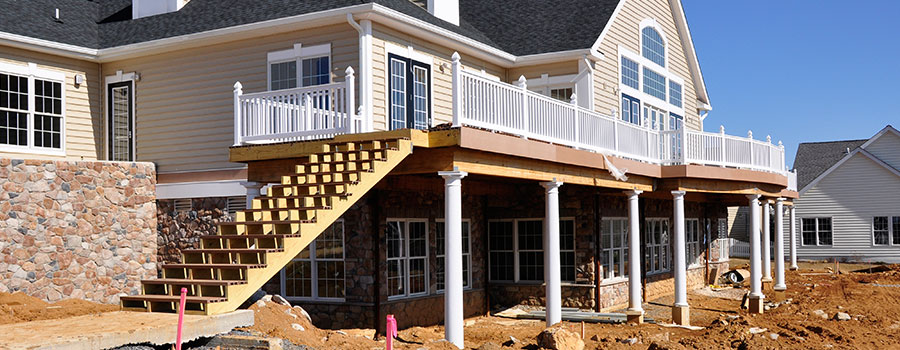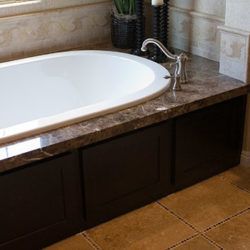Do you wish your kitchen was a little bigger to fit a breakfast table? Perhaps you want a soaking tub in your master bath, but none of the types you’ve seen will fit.
You should go for a bump-out addition. A bump-out addition allows you to add a few feet to your home without the hassles and costs of a full-fledged room expansion.
If you believe a bump-out, also known as a micro-addition, might meet your design needs, this post will address your queries.
A bump-out addition is cantilevered off the existing foundation, similar to a balcony, eliminating the need for foundation construction.
A micro-addition does not have to be connected to the existing roofline. Due to this, you save time and money while providing additional room.
The primary distinction between a bump-out and a room extension is size. Bump-outs are minor. They are often only a few feet long, which saves money on materials.
While they are good, home addition contractors observe that bump-out expansions are limited due to the need for a separate foundation. This means that if you are looking for a large room, they might not be the right one for you.
Reasons to consider a bump out in your home
Aside from financial savings, there are other reasons why you can consider a bump-out over a full-fledged room expansion.
The most obvious argument is that they require a few more feet of space within the house. This means that you don’t need additional land or make a new foundation.
Another reason to consider this type of addition is if you are looking to protect your trees. When you install this addition, you safeguard mature trees and their roots.
You can add space to your home without disturbing the soil by cantilevering the addition off the existing foundation.
And tree roots aren’t the only item that can be found underground. The foundation work required for a full-size home addition may entail relocating below-grade plumbing or utility lines.
The labor associated with relocating those lines adds to the overall expense of the remodel.
When you go with a bump-out addition, you avoid all of this.
Before building the addition, check with local officials for permit requirements and zoning setbacks. This way you have peace of mind you are on the right path.
How big can the bump-out addition be?
The weight of a cantilevered bump-out is supported by the existing floor joists in the house. The bigger the joists, the bigger the bump-out that you can add.
Most people add bump-out expansions to the first level of their home, but you can also add one to the second story. You can also install a bump-out if your house is constructed on a concrete slab. According to experts, a slab can sustain a 3-5-foot cantilever.
Bump-out additions you can consider
There are plenty of additions you can add to your home. The best ones are:
Sunroom
Do you like sitting outside but hate the bugs and the heat? Because it is attached to the house, you can consider a sunroom as a bump-out and an all-season room.
The beauty is that the sunroom doesn’t have to be huge. Eight feet by 10 feet would suffice for you to enjoy the space. As long as the area is assessed and approved by a builder and architect, you can build your room on an existing deck or ground level.
Bay area
If you have considered creating banquette seating in your kitchen, you can install bay windows in place of existing windows.
The bay is ideal for installing banquette seats. When your window is finished, you can put a table and chairs in front of it. Banquette seating is ideal as it accommodates more people. Remember to add a lovely cushion and pillows to the bench.
Bedroom
If your master bedroom isn’t en suite, you can bump out the bathroom for an en suite primary bathroom.
All you need to do is increase the size of your bedroom to make a place for a larger bathroom on an inner wall.
Install plumbing on the inside walls so it does not freeze in cold weather. Increase the height by around five feet and the length of the bedroom.
When you’re finished, you should have enough space to expand the bathroom and install:
- Shower
- Soaking tub
- Toilet
- Two sinks
Basement
If you enjoy entertaining but lack space, expanding your basement could be a smart option. When considering this, remember that the bump-out necessitates some design and the assistance of an architect or engineer.
You will tell the pro what you want, and they will tell you what you can have based on local building codes.
You can create your bump out and cover the concrete top with soil if the basement is completely underground and the terrain is flat. When the extension is finished, cut through the inner wall to open the bump-out.
The bump-out you create can accommodate a pool table or a small home cinema. You can use whatever space you have created for enjoyment and recreation. You can also have a playroom if you have little children.
While at it, consider a bump-out on top of the basement extension if the slope of the ground exposes the top section of the bump-out. This will result in a two-story bump-out.
Office
Many people are working from home nowadays, and if you are one of them, you can make space for yourself to be away from most of the distractions in the house.
The beauty is that the area does not have to be enormous. A desk, chair, and small sitting space would be ideal. A built-in bookshelf would be a lovely addition.
The size of the bump-out is determined by the floor you are on. The ground floor can be more significant, but the higher level must be cantilevered, limiting your ability to extend out as far.
Remember that a 5’ x 10’ bump-out will provide enough room for comfortable working. You only need to work with experienced home addition companies DC that know what they are doing.



